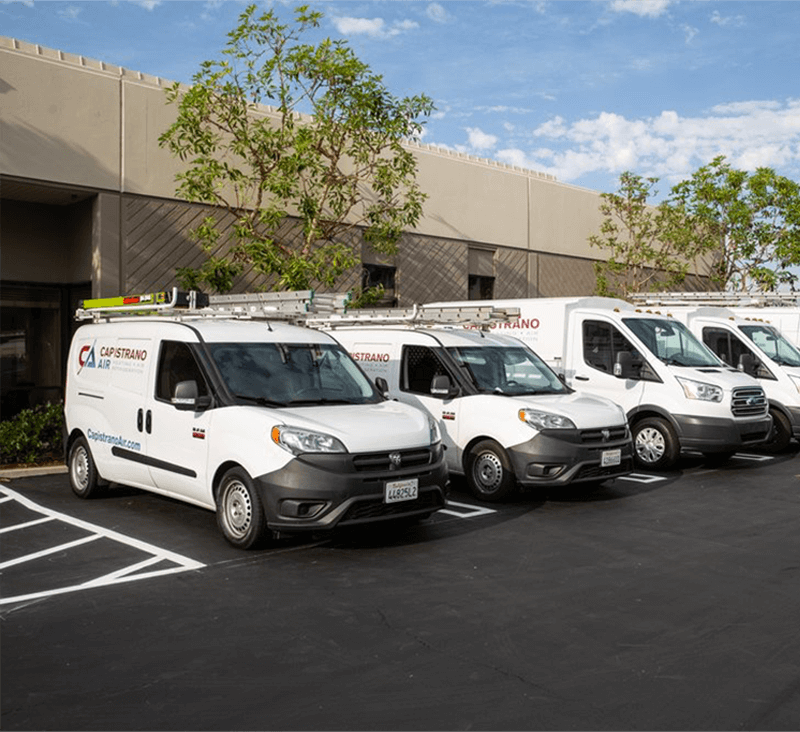Regular cleaning and maintenance will save you money and extend the life of your heat pump or HVAC unit.
Before each summer, a quick check-up of your air conditioner will ensure that it works efficiently when needed. In addition, you can count on saving money for costly repairs or replacement, not to mention the discomfort of sitting in a hot home.
Your unit which is termed an HVAC system will consist of a heater and an air conditioner. Both units rely on a blower and compressor. The air conditioner will also have an evaporator, condenser coil, and compressor. Some units have a heat pump.
Your annual checkup should consist of the following:
Make Sure You Turn the Power Off
First and foremost, turn off the power to the unit. There should be an exterior shut off box near the unit if it is outdoors. Turn off the breaker box circuit to the unit also.
Always Clear Out the Debris
The unit needs adequate ventilation around the exterior condenser or compressor. Take off the fan cage, remove the fasteners, and lift the cage away from the unit. Using a broom, or with a vacuum, clean any debris and leaves from around the interior.
Make Sure Your Fins Are Clean
The fins or props that move in a circular motion need to be cleaned and the best way is by using your garden hose. Don’t use any type of pressure washer as that may damage the fins. There are cleaning sprays for these parts available at any hardware store. Be sure to follow the instructions.
Make Sure Your Fins Are Strong
Your unit relies on air-flow and if the fins are damaged, this airflow is reduced, impacting the efficiency. If you notice that the fins are bent, carefully straighten them out, very gently. Make sure that any tubing within the fins is not damaged during this process.
Make Sure the Area around the AC Is Clean
When you complete the steps above and have replaced the fan cage, or cover, clean any leaves or debris around the outside of the condenser. Keep the area clear of debris and vegetation for about two feet around the unit. During times when the unit is not in use, you can cover the top of the unit with plywood or plastic to keep leaves, etc from falling inside. Keep the sides clear to avoid any build-up of moisture. Be sure to remove this cover prior to starting the unit.
Make Sure the Unit Is Level
Check the pad underneath the unit to make sure it is level. With the soil settling, this can be a problem for the unit. An uneven unit can affect the condenser and cause it to fail prematurely. Use shims that are resistant to rot to level the pad. In the case of a heat pump, the pad can be slightly out of level to allow any winter moisture to flow away from the foundation of the home.
Make Sure The Evaporator Coil Is Clean
Inside the unit is the coil, and it will need to be cleaned also. Remove the evaporator coil door, and use a brush to remove dust from the coil. You can then spray the coil with a no-rinse cleaner which is available at most hardware stores. The remains of the spray should drip easily onto the drip pan. In order to keep the drain pan unclogged, you can use a combination of half and half bleach and water. This will also prevent algae from growing inside the drain.
When you are done with this step, and the solution drains easily, you can replace the coil door, and reseal with duct tape.
Make Sure the Drain is Clean
On the inside of the unit, humid, warm air can build up as it travels through the coil. The coil is cold and absorbs any heat from the air, thus cooling it, before being circulated into your home. The humidity begins to condense on the coil and becomes liquid, and drips into the pan below. This fluid flows into a tube that goes into a drain that leads into a sink or to the outdoors.
This fluid, if it becomes plugged up in the drain can form mold and algae. A plugged drain can flood out onto a floor, or affect the cooling ability of the system.
This drain must be cleaned in order to prevent blockage and any damage to the unit or the floor. It can be located by identifying a one inch PVC pipe that usually will drain outside the condenser, into a sink, floor drain, or down an exterior wall.
The cleaning is relatively easy to accomplish by using a wet/dry vacuum. This will clear any potential of mold, etc., causing a blockage.
Change Out the Filter
Most HVAC systems have a filter that should be changed at least two times each year. The rule of thumb is before winter and before summer. Use a filter with the corresponding airflow rating. HEPA filters can lower the effectiveness of your system, so make your choice accordingly. They can cause the indoor coil to freeze which in turn will harm your unit.
Relatively easy to install, filters are inexpensive and very important to the operation of your unit.
Using the fresh air return center, just loosen the screws, remove the old filter, and install the new filter, paying attention to the arrows on the package, showing the way the filter should be installed.
Turn the AC Back On
Other maintenance steps can only be accomplished by an HVAC technician. These include refills or leaks in the refrigerant system. Homeowners lack the tools and the expertise to check refrigerant levels, and anything else pertaining to the levels of the refrigerant in your system.
You can keep the airflow free of obstacles, and your ducts clean, but the refrigerant is an essential part of the total system. Use a certified HVAC certified professional to service your refrigerant.






